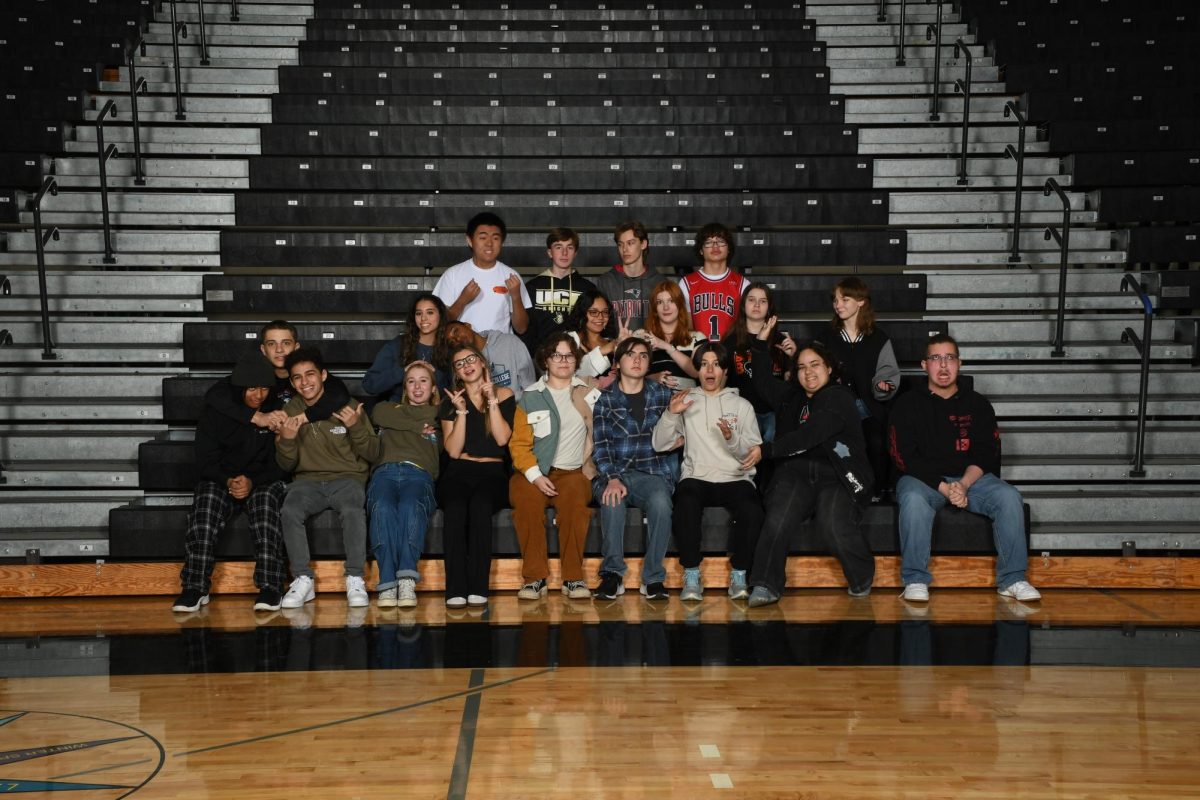High fashion no longer fashionable
A red-colored sneaker from an expensive name brand shoe company.
November 1, 2022
In the past couple of decades, we have seen arguably the largest increase in designer clothing popularity. There isn’t a single newly released hip-hop song that doesn’t include numerous references to high-priced fashion in its lyrical content. You won’t be able to spot famous celebrities wearing anything but the trendiest names at exclusive events such as the Met Gala. But today, it seems as if these luxurious brands are losing their vision.
High-end clothing pieces are beginning to become less creative while prices steadily rise. The mass-purchasing of these extravagant items comes off more as a large-scale display of consumerism rather than a genuine interest in design and quality.
The notoriety these designers have today can be attributed to their historical foundations that were organically built decades ago. Many of these sought-after brands began with elegant dresses and other various displays of expert craftsmanship – the name wasn’t the only iconic element within the clothes. Nowadays, instead of expanding on past ideas and innovating with new designs, these brands exploit their platforms to create ironic and blatantly boring pieces that suffer from the lack of effort put into them.
Balenciaga, a designer fashion brand that has maintained its lavish status for decades, is guilty of this marketing tactic. In early August of 2022, Balenciaga revealed their very own trash bag in two different colors, black and white. One might approach this release with curiosity; what could an illustrious brand like Balenciaga bring to the table when it comes to a bag meant for throwing out junk? Well, actually nothing.
The quality of the bag is undeniable, featuring an opulent calfskin material. However, with a price tag of $1,790, alongside the uninspired and almost satirical design, the product seems to cater to a naive audience whose interest is only piqued by the designer’s title, rather than the actual good being sold.
A common scenario is typically utilized in discussion of these questionable fashion choices: would you purchase said item if it wasn’t made by said brand? For many, the selling of a leather trash bag by one of the largest fashion designers on the globe made the answer to this famous hypothetical crystal clear.
Alongside the lack of creativity, a massive portion of the backlash Balenciaga faced after coming out with their trash bag was what the public deemed as a ridiculous mocking of everyday people and of the lower class. However, Balenciaga isn’t the first designer to receive this critique.
Rick Owens, an avant-garde fashion designer, is notorious for creating minimalistic clothing pieces that lack logos and designs, appealing to an audience who might enjoy a mix of luxury and anonymity within their outfits. With the success of Rick Owens’ Ramones shoe and DRKSHDW line, a point is made apparent that many seek this simplicity in their clothes; whether it be the frequent black and white color schemes or the basic designs, consumers want to revert back to basics in a sense.
However, this all comes off as extremely ironic and pretentious. The shoe features a design that is almost a carbon copy of Converse’s famous Chuck Taylor (the prices being the major difference). Ramones retail anywhere from $300 to $600, while Chuck Taylors consistently sell for under $50. This theme of rudimentary design with abnormal cost appears often throughout Rick Owens’ line, much like the Ramones. The obvious attempt at creating mysterious and esoteric clothing that strays away from stereotypes has inadvertently backfired, instead producing forgettable designs and items for materialistic individuals who will wear whatever is in trend, regardless of its authenticity.
The biggest conflict fashion faces today is longevity. If luxury designers continue to go down this path of putting out unenthusiastic and unoriginal designs, there will be nothing memorable left over. Printing a simple phrase on a blank tee shirt and giving it an $1,000 price tag isn’t progressing fashion in any way, regardless of what the message may be.
Recreating an iconic shoe, but with slight dissimilarities, accompanied by another outrageous price, is also not pushing a fashion agenda forward in any way. Among the numerous problems that arise from these practices, the impact they have on smaller artists is consequential. These world-class brands influence aspiring creators who have just begun to make their own clothing, creating a population of designers set on mimicking the already-stale ideas at the top.
With the internet’s plentiful resources and social media’s ability to propel one to fame overnight, creating a fashion brand today requires almost zero talent. None of this is to say that these brands haven’t put out quality works before, I either own or have owned pieces from both of the brands that I’ve critiqued. However, the faults these top designers continue to make need to be addressed. High fashion brands must look beyond their names and work to create genuine pieces with meaning within in order to uphold their legacies and the luxury clothing standard.











































